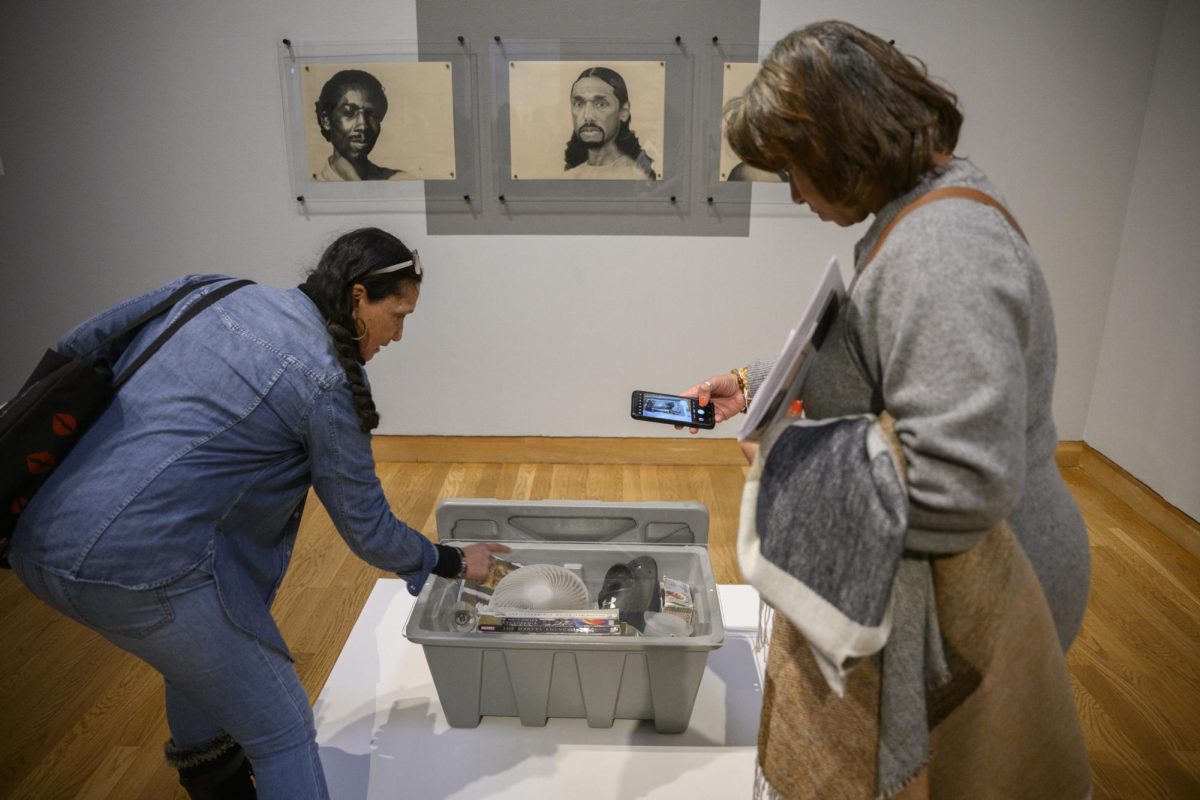
The exhibit runs until May 18. Courtesy of Weisman Art Museum.
“SEEN,” an exhibit showcasing works by currently incarcerated artists, is on display at the Weisman Art Museum on East Bank until May 18.
Organized by non-profit group We Are All Criminals, the exhibit pairs incarcerated artists with artists on the outside who work with them to realize their ideas for the exhibit. A total of seven multimedia installations make up the exhibit, divided into two galleries, one focusing on experiences of being incarcerated, “inside,” and the other focusing on freedom, “outside.”
Through artistic collaboration and exploration of sound, space, movement and languages, the works in “SEEN” show the experiences of incarcerated artists contrasted to their liberated counterparts. Most of the incarcerated artists are Black, Indigenous or men of color, reflecting the racial inequality in the criminal justice system.
One of the most impactful installations comes from writer Erin Sharkey and incarcerated artist Lennell “Fresh” Martin, whose work with prison property bins showcases what people leave behind when incarcerated. The work features two gray, plastic property bins, one with a small tree inside, the other full of possessions the artists were not able to take with them into prison.
Prisoners are only allowed to bring with them as much as they can fit in the property bin, often needing to leave behind personal belongings in order to save room for essentials. The items left behind on display feel like a representation of the lives the artists left behind when they were incarcerated.
In an installment called “Cage[d], Black Label Movement,” dancer Cheng Xiong performs incarcerated artist Sarith Peou’s exercise routine in a faux cell. Xiong has performed the routine monthly, and his final performance will be on May 3.
University of Minnesota art professor Diane Willow and incarcerated artist Ronald “Bino” Greer II worked to create a poetry garden where Bino’s own poetry is displayed alongside a variety of plants. Documentary filmmaker Kevin Yang worked with incarcerated artist Fong Lee on an installation inspired by khi tes, a Hmong ritual where people tie white strings to each others’ wrists while wishing them well.
Other works on display include paintings, poems and sculptures, all inspired by life on the inside.
